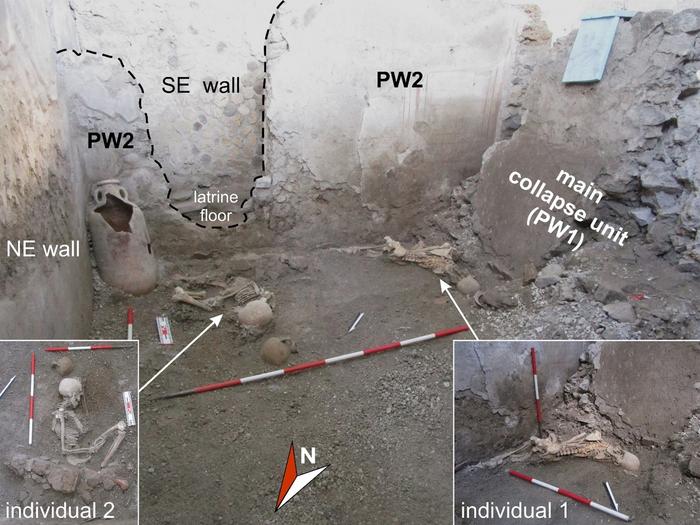Pompeii skeletons suggest earthquakes piled on cataclysmic destruction from volcanic eruption
Ancient Roman city was destroyed by eruption of Mt Vesuvius in 79AD
Your support helps us to tell the story
From reproductive rights to climate change to Big Tech, The Independent is on the ground when the story is developing. Whether it's investigating the financials of Elon Musk's pro-Trump PAC or producing our latest documentary, 'The A Word', which shines a light on the American women fighting for reproductive rights, we know how important it is to parse out the facts from the messaging.
At such a critical moment in US history, we need reporters on the ground. Your donation allows us to keep sending journalists to speak to both sides of the story.
The Independent is trusted by Americans across the entire political spectrum. And unlike many other quality news outlets, we choose not to lock Americans out of our reporting and analysis with paywalls. We believe quality journalism should be available to everyone, paid for by those who can afford it.
Your support makes all the difference.A pair of skeletons found in the ruins of Pompeii indicate that earthquakes compounded the cataclysmic destruction of the ancient Roman city by the eruption of Mount Vesuvius.
A study published in Frontiers in Earth Science on Thursday suggests that many people who survived the volcanic eruption in 79AD were likely killed by “strong earthquakes” that quickly followed.
The new findings may help archeologists better reconstruct the events that led to the sudden catastrophic destruction of the island city and its people.
“We proved that seismicity during the eruption played a significant role in the destruction of Pompeii and, possibly, influenced the choices of the Pompeiians who faced inevitable deaths,” volcanologist Domenico Sparice, who co-authored the study, said.
In the course of excavations in the city’s ruins, researchers found inconsistencies with the effects of volcanic eruption in some collapsed buildings that likely had “a different explanation”.
When they found two skeletons with severe fractures, both of men around 50 years of age, scientists decided to investigate further.
One individual was suddenly crushed to death by the collapse of a large wall fragment and another likely died from injuries after attempting to protect himself with a round wooden object, scientists said.
“The people who did not flee their shelters were possibly overwhelmed by earthquake-induced collapses of already overburdened buildings,” Valeria Amoretti, another author of the study, said.
“This was the fate of the two individuals we recovered.”

Scientists said the two men didn’t die from inhaling ash or from extreme heat as was thought to have been the fate of most of those who perished in the disaster.
Similarly, most people who survived the first phase of the eruption may likely have been overwhelmed by collapsing walls due to the earthquakes, the study said.
The findings render the survival of a large number of people by leaving the city is plausible but “hopeless” scenario, scientists said.
But there is still no “reliable estimate” of how many people died from the volcanic eruption or from damage caused by subsequent earthquakes, researchers said.
“New insight into the destruction of Pompeii gets us very close to the experience of the people who lived here 2,000 years ago. The choices they made as well as the dynamics of the events, which remain a focus of our research, decided over life and death in the last hours of the city’s existence,” Gabriel Zuchtriegel, another author of the study, said.
Join our commenting forum
Join thought-provoking conversations, follow other Independent readers and see their replies
Comments